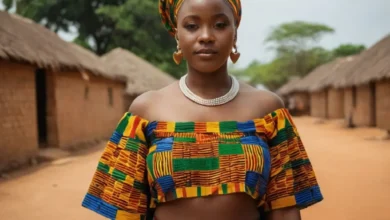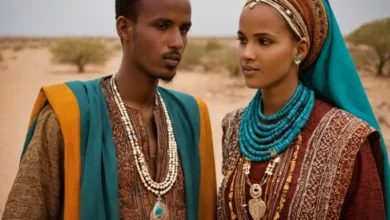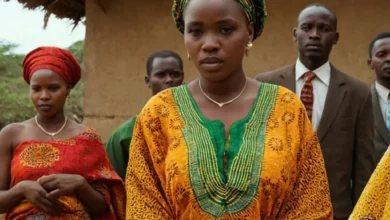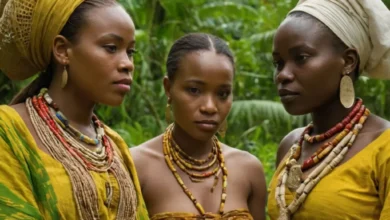Nigerian Traditional Clothing
Nestled in the heart of West Africa, Niger is a land of vast deserts, rolling savannas, and a rich cultural tapestry.
The country’s traditional clothing, a vibrant expression of its diverse heritage, speaks volumes about the interplay of Sahelian and Islamic influences. In this article, we will embark on a fascinating journey through the world of Nigerien traditional attire, exploring its intricate designs, symbolic meanings, and the cultural significance it holds for the people of Niger.
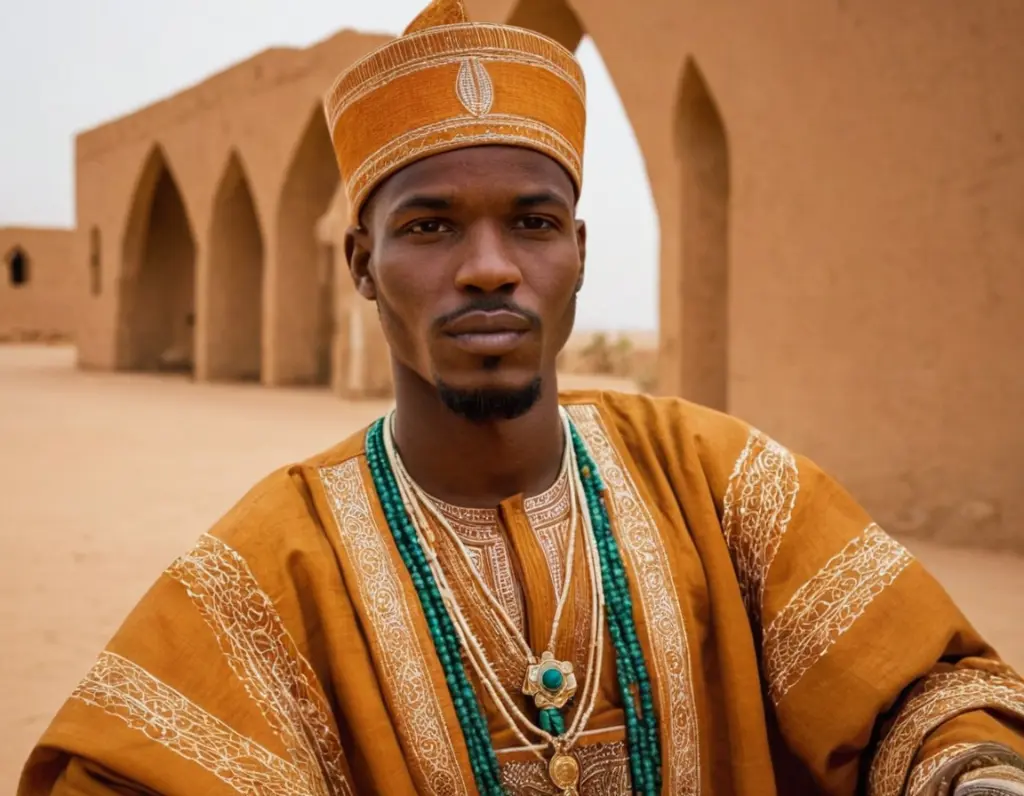
A Tapestry of Influences: Sahelian and Islamic Traditions
Niger’s traditional clothing reflects a unique blend of Sahelian and Islamic influences, both of which have shaped the country’s cultural landscape for centuries.
The Sahelian tradition, deeply rooted in the region’s nomadic heritage, emphasizes practicality and functionality. Garments are typically loose-fitting, allowing for maximum comfort and movement in the harsh desert climate.
See also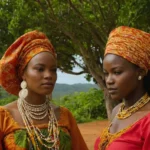 São Toméan and Príncipean Traditional Clothing: Reflecting African and Portuguese Heritage
São Toméan and Príncipean Traditional Clothing: Reflecting African and Portuguese Heritage
Natural materials like cotton and leather are favored, providing breathability and durability. The vibrant colors used in traditional textiles are often inspired by the natural surroundings, with earthy tones of ochre, brown, and blue dominating the palette.
Islamic influences, introduced through centuries of trade and religious exchange, are evident in the modest styles and the use of specific colors and patterns. The Islamic emphasis on modesty dictates that garments should cover the body appropriately, while the use of geometric patterns and the avoidance of figurative imagery align with Islamic artistic traditions.
A Glimpse into the Past: The Significance of Traditional Attire
Nigerien traditional clothing is not merely a matter of style; it serves as a powerful symbol of identity, tradition, and social status. The intricate embroidery, the choice of colors, and the specific design elements all hold profound cultural and historical significance. For example, the use of specific motifs, such as the karamba, a crescent-shaped pattern found in numerous traditional designs, is associated with protection and good fortune.
The fabric itself also carries cultural weight. Hand-woven fabrics like bogolanfini, a traditionally dyed cotton fabric, are highly valued for their craftsmanship and symbolic representations. These fabrics are often adorned with complex designs and patterns, reflecting the artistry and cultural knowledge of the weavers.
See also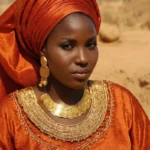 Senegalese Traditional Clothing: The Elegance of Boubous and Beyond
Senegalese Traditional Clothing: The Elegance of Boubous and Beyond
The Varied Palette of Nigerien Traditional Garments
The diversity of Nigerien ethnic groups is reflected in the wide array of traditional garments worn across the country. Here are some of the most prominent examples:
1. The Bubú: A Staple for Both Men and Women
The bubú is a loose-fitting, long tunic-like garment that serves as a foundation piece for both men and women in many Nigerien cultures. For men, it is often worn with a pair of loose-fitting trousers known as fula. For women, the bubú can be paired with a variety of skirts, trousers, or wraparound garments like the tola.
The bubú is typically made from cotton or linen, which are both breathable and comfortable in the hot climate. The length and style of the bubú may vary depending on the specific ethnic group and social context.
2. The Tola: A Versatile and Elegant Wraparound
The tola is a wraparound garment that is primarily worn by women. It is typically made from a rectangular piece of fabric that is wrapped around the waist and draped over the shoulders. The tola can be adorned with intricate embroidery, beadwork, or tie-dye designs.
The tola is highly versatile and can be worn in various ways depending on the occasion and personal preference. It can be used as a formal dress, a casual outfit, or a decorative element to complement other garments.
3. The Kaba: A Statement of Style and Grace
The kaba is a loose-fitting, long-sleeved tunic that is a popular choice for women in Niger. It is often adorned with colorful embroidery, beads, and decorative patterns. The kaba is frequently worn during special occasions, festivals, and ceremonies.
The kaba can be made from a variety of fabrics, including cotton, silk, and velvet, and its design can vary significantly depending on the specific ethnic group and region of Niger.
4. The Dashiki: A Symbol of Pan-African Pride
The dashiki, a vibrant and colorful shirt-like garment with a V-neck and embroidery, originated in West Africa and has become a symbol of Pan-African pride. It is a popular choice for men in Niger, especially during celebrations and special occasions. The dashiki is typically made from cotton and comes in a variety of colors and designs.
A Legacy of Tradition: The Future of Nigerien Traditional Clothing
Despite the influences of globalization and modernization, Nigerien traditional clothing continues to be a vibrant and cherished part of the country’s cultural identity. The younger generation, increasingly exposed to Western fashion trends, is still drawn to the beauty, symbolism, and cultural significance of traditional attire.
However, there are challenges. The encroachment of fast fashion and the rising cost of traditional fabrics and craftsmanship threaten to erode the legacy of Nigerien traditional clothing. Efforts to promote and preserve traditional textile techniques, encourage local production, and create platforms for showcasing Nigerien fashion are crucial for ensuring the future of this rich cultural heritage.
FAQs
What are the key factors that influence Nigerien traditional clothing?
Nigerien traditional clothing is primarily influenced by Sahelian and Islamic traditions. The Sahelian influence emphasizes practicality and functionality, while Islamic influence emphasizes modesty and specific design elements.
What is the significance of Nigerien traditional clothing?
Nigerien traditional clothing plays a significant role in the country’s cultural identity. It reflects the diversity of ethnic groups, expresses social status, and serves as a medium for storytelling and cultural expression.
What are some of the challenges faced by Nigerien traditional clothing?
The increasing popularity of fast fashion, the rising cost of traditional materials, and the decline of traditional textile techniques pose significant challenges to the future of Nigerien traditional clothing.
The intricate designs, vibrant colors, and symbolic meanings of Nigerien traditional clothing offer a captivating window into the country’s rich cultural heritage. The interplay of Sahelian and Islamic influences has created a unique and dynamic fashion landscape that reflects the spirit and resilience of the Nigerien people.
As we move forward, it is essential to acknowledge the challenges facing traditional attire and to work towards preserving this valuable cultural legacy for future generations.
By understanding the history, significance, and evolution of Nigerien traditional clothing, we can better appreciate the beauty and cultural richness of this fascinating African nation.
